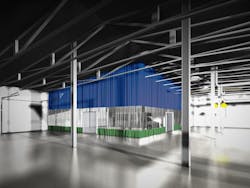The challenges and opportunities afforded by implementing “green” fleet strategies were addressed in several technician sessions at the 2015 Technology & Maintenance Council (TMC) annual meeting held this week in Nashville, TN—with several speakers indicating that “going green” is may become almost unavoidable down the road in trucking.
“Shippers demand it and consumers demand it,” noted Randy Tumbarello, U.S. maintenance director for Trimac Transportation, who chaired a session entitled Green Trucks, Green Shops, and Green Incentives.
“Fleets going green can save money and comply with government regulations as well,” he added. “The problem is good intentions are not enough to implement a sustainability program.”Duane Lippincott, senior project manager for United Parcel Service, in particular stressed that “there is no blanket solution for replacing petroleum” in the trucking world and that making a solid business case for any alternative fuel without relying on tax incentives, grants, and other “financial aid” is critical for long-term success.
“We believe alternative fuel vehicles (AFVs) help mitigate risk to the [petroleum] fuel supply, such as weather or terrorism, but they must be able to stand on their own two feet,” he said.
Lippincott also stressed that government legislative efforts designed to spur AFV adoption “constantly change,” which is why he feels they cannot be relied on for long-term fleet investment in alternative fuels.
“It’s also important to develop an ‘exit strategy’ for whatever alternative [fuel] you select,” he added. “You need to have a plan if it doesn’t work for your fleet.”
Yet Erik Neandross, CEO for consulting firm Gladstein, Neandross & Associates, stressed that obtaining tax credits, grants, and such can significantly defray the costs for fleets implementing an AFV program.“Why is grant funding important? [Alternate fuel] trucks and refueling stations are expensive and that [grant] money helps pay for them,” he said.
To date, Neandross (seen speaking at left ) said his firm has helped its customers win $253 million in grant money, with a 92% success rate.
“And there is funding available at the federal, state, and local level – with more state level funding available today than in the past,” he added. Altogether, Neandross indicated that some 500 funding programs exist today at all levels of government, yet are being constantly being revised and htus can change on a year to year basis.
Art Trahan, senior technical manager for Ryder System, noted that any switch to alternative fuels needs to involve the entire organization – not just the drivers and technicians who will operate and maintain AFVs directly. That’s why Ryder is making natural gas training mandatory for its entire 6,000-plus maintenance staff – administrative personnel included – this year.
“You have to have awareness by everyone,” he stressed.
Tony Eiermann, manager of asset and value management for Coca-Cola, emphasized that driver training in particular is critical to getting the most out of a fleet sustainability program.
“If you do not operate vehicles properly, you don’t get the benefits,” he explained, highlighting Coca-Cola’s Smart Driver program as an example; part of a broad company-wide sustainability program launched back in 2011.
“Smarter driving promotes safety, reduces equipment wear and tear, and saves fuel,” Eiermann said.
Brett Lindsay, the western regional VP for Clean Energy, noted that “keeping it simple” should be a guiding principle for any and all shop upgrades required for maintaining AFVs.“A lot of things are changing in this space so you need to do your homework,” he stressed. To that end, Clean Energy developed what it calls the “Easy Bay” system (seen at right) last year – a retractable nylon vapor barrier that can isolate one or two bays from the rest of a shop in order to safely work on natural gas-powered equipment.
“It fits a [shop] bay like a glove – not just the sides but the roof and floor as well,” Linsady noted, adding that Clean Energy has deployed 86 such “Easy Bay” systems to date.
Natural gas in particular is getting more attention from non-heavy-duty fleets, said Guy Rini with GT-R Development Inc., who chaired a panel dubbed Living with Alternate Fuels in Light/Medium/Vocational Truck Operations.
“Not since the 1980s has there been so much interest in natural gas as a replacement for diesel,” he said. “Even with the recent drop in fuel prices, there are still advantages to natural gas.”
Scott Barraclough, program & product segment manager for Mack Truck Inc., noted though that fleets with “home-based” refueling options and fixed routes are for the moment better suited to switch over to natural gas compared to long-haul carriers.
He noted that “the economic advantages for natural gas are still there” despite the price falloff experienced by diesel over the last six months, though that advantage has narrowed from a 30%-50% fuel price savings to 15%-20% now.
“The primary benefit is that natural gas prices have stayed relatively stable over the last two years, while diesel prices have experienced far more fluctuation,” he said.






